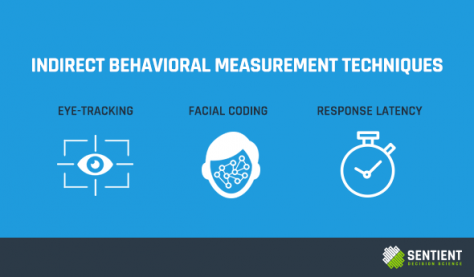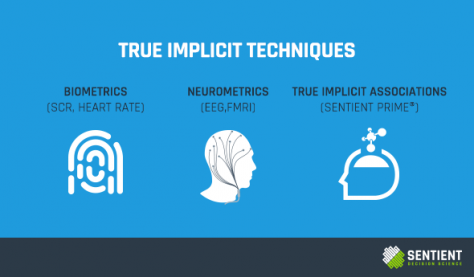Will 2017 Finally Be the Year of 'Show Me, Don’t Tell Me' Market Research?
Personally, I’ve learned something about making end-of-year projections—mine tend to take at least five years to come true!
I’m sure some of that lag is driven by my tendency toward overly-optimistic outlooks, but some must also be driven by the snail’s pace of change within the market research industry. Looking back at some predictions from 2010, we found this particularly optimistic (and now embarrassing) prediction of what would happen in 2011:
“Behavioral science will supplant traditional market research. Traditional market research is very good at describing what people have done, but has lacked insight into the true drivers of behavior. Plucking principles from psychology, sociology, anthropology, neuroscience, and behavioral economics has proven to provide an immediate boost to the bottom line by revealing specific methods for influencing customer behavior.”
While behavioral science certainly didn’t supplant traditional research in 2011, we did begin to see the wave of change swell over the course of the next five years. And for those of us riding that wave we’re now seeing signs that we’re soon to break into the early majority adoption phase of behavioral science based research techniques.
Insight Through Observation
One of the key points from that 2010 post that is even more relevant today is the emphasis on how disciplines of behavioral science gain insight by observing what people reveal through their behavior, rather than relying on what they explicitly tell you in a survey. In fact, this is the cornerstone of behavioral science, and it is the common thread that can be pulled through neuroscience, psychology, behavioral economics and cultural anthropology.
These disciplines all gain insight through observation. We may be observing electrical activity at the scalp (neuroscience), or physical response times following primes (implicit psychological measures), or behavior following experimental manipulation of an environment (behavioral economics), or in-situ behavior with a passive observer (ethnography). But in each case, we’re not asking direct questions about why people do what they do, or how they feel, or what they think—rather, we’re using indirect measures to gain insight on the drivers of behavior.
This common thread is one that is gaining greater recognition and acceptance as an “a-ha” moment in the market research industry.
The Big Data “Ah-Ha”
I think the collective realization of the power of indirect methods has been accelerated by the “big data” movement. Analysis of relationships between variables in disparate data streams, quantifying consumer sentiment in social media, and advanced tools for text analytics have shown us that we don’t have to rely solely on what people say to us in a survey. Rather, we can gain more accurate insight, and often more quickly, by simply observing how people behave.
While big data often falls short on delivering the “why” behind the behavior observed, the broader “a-ha” here for the industry was that this same principle of “insight through observation” applies to the advanced tools in neuroscience, psychology, and behavioral economics. And these disciplines are exceptional at providing insight on the “why.”
Non-conscious As the New Normal?
Emerging from the innovation and early adoption phases, advanced behavioral science techniques are about to become mainstream. Given our interest and investment in this wave change, we read with great interest Ray Poynter’s predictions for market research trends in 2017. He makes several important observations including predictions on automation, storytelling, and AI. But one prediction in particular should produce both excitement and anxiety for those in the non-conscious measurement space.
Ray makes the observation that implicit techniques are proving to be highly practical across numerous business applications and he predicts that this will result in an upward trend of the use of “implicit” in 2017. Based on the growth we’ve seen over the past five years, we agree that the migration of the industry to “Show me, don’t tell me” data collection methods will accelerate in 2017. This is encouraging for an industry grappling to stay relevant in the age of big data and real-time social media analytics.
But simultaneously troubling, Ray predicts that “more and more research [will be] re-badged as implicit, including ethnography, passive data collection, conjoint analysis, semiotics, biometrics, and of course the neuro-based techniques.”
Indirect Does Not Equal Implicit
We agree that attempts to rebadge techniques as implicit will likely occur in 2017. In fact, we’ve observed firms call response latency, conjoint, and even text analytics techniques “implicit” over the last several years. However, many of these techniques are indirect measures not implicit measures. That is, they gain insight through observation (i.e. they are indirect), but that does not necessarily mean they are isolating non-conscious processes.
That is a problem if clients are seeking methods that will give them unique insight on the non-conscious that they can’t currently get from their best conscious measures. In fact, there is long-term danger here for clients if we blindly move forward allowing any indirect technique to be rebadged as implicit.
In psychological science, there is an important distinction between merely indirect measures and truly implicit measures. The distinction has to do with whether the method can isolate non-conscious processes.
Know the Difference
Implicit techniques are those that are NOT “direct, deliberate, controlled, intentional self-assessments.” – Nosek, Hawkins, and Frazier
This definition allows us to classify methods very clearly, and this classification is important because it allows clients to assess whether a proposed method is subject to the System 2 conscious filter and whether it can truly isolate the non-conscious processing of their marketing communications.
The following table provides an updated summary to a table we published in 2014, with the addition of an analysis of whether the research technique isolates the non-conscious:

It is important to note that all of these advanced methods add value to a researcher’s toolbox. Some of our favorite scalable indirect tools include:

And of course, our preferred implicit techniques include:

Extensive research has shown that greatest predictive power comes from combining conscious and non-conscious measurement techniques. This means that understanding whether your method is indirect (yet subject to the conscious filter), or truly implicit, matters for clients who are looking to advanced techniques to reveal the unique impact of the non-conscious on consumer behavior.
While the prediction that the market will move to rebadge more techniques implicit in 2017 may be right, clearly, calling conjoint, ethnography, and other indirect techniques implicit measures will be a step back for the industry, not a step forward.
A New Prediction for Next Year
Which leads us to another end-of-year prediction: 2017 will see increased client demand for suppliers to define and defend their criteria for characterizing a method as implicit, and this will lead to a broad industry understanding of which methods can isolate the non-conscious and which are valuable as indirect measures.
Who will join Sentient in meeting these client demands, so we don’t have to wait another five years for the prediction to come true?

